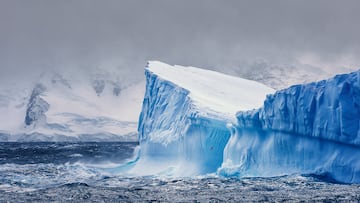Scientists explain the reason for the appearance of a hole in Antarctic ice larger than the state of Maryland
Scientists were puzzled about the appearance of a hole the size of a small country, but now they know why.


Coming across a hole in the Antarctic that is larger than Maryland might well be cause for concern. In 2016 and 2017, scientists saw just that: gaping wide in the middle of Antarctica’s Weddell Sea were giant holes in the sea ice.
These holes, called polynyas, hadn’t been seen on this scale since the 1970s, when New Zealand-sized holes were captured on satellite cameras. For a long time, they were a mystery. But thanks to years of data from robotic floats, the aforementioned satellite images, and even seals wearing sensors, scientists finally have a solid, if not simple, explanation.
“This study shows that this polynya is actually caused by a number of factors that all have to line up for it to happen,” said co-author of the paper Stephen Riser, a UW professor of oceanography. “In any given year you could have several of these things happen, but unless you get them all, then you don’t get a polynya.”
Fun fact:
The term “polynya” comes from a Russian word that roughly means “hole in the ice"
How to make a polynya...
If you want to make your own polynyas on your planet, all you need is: an Antarctic sea, very salty surface waters and powerful winter storms.
Simply use your storm to stir the ocean and mix the warm deep water up to the surface, where it melts the ice and keeps it from refreezing. By doing so, the ocean is constantly turning itself over, keeping the hole open for weeks or even months. “Essentially it’s a flipping over of the entire ocean, rather than an injection of surface water on a one-way trip from the surface to the deep,” said co-author Earle Wilson.
Curiously, on Earth, all the polynyas happen in the same place: right above an underwater mountain called Maud Rise. This is due to the fact that the mountainside creates a spinning current that traps warmer water, helping keep the hole open.
While it’s open, nature takes advantage, and penguins use the polynya as an oasis in the ice, while whales and seals use it to stick their heads out of the water and get some air.
There is, however, some concern regarding the effects that polynyas may have on the climate, given the fact that they could release centuries-old carbon stored away deep down in the depths. “This deep reservoir of carbon has been locked away for hundreds of years, and in a polynya it might get ventilated at the surface through this really violent mixing,” lead author Ethan Campbell said. “A large carbon outgassing event could really whack the climate system if it happened multiple years in a row.”
“We need to improve our models so we can study this process, which could have larger-scale climate implications", concluded Riser.
Get your game on! Whether you’re into NFL touchdowns, NBA buzzer-beaters, world-class soccer goals, or MLB home runs, our app has it all. Dive into live coverage, expert insights, breaking news, exclusive videos, and more – plus, stay updated on the latest in current affairs and entertainment. Download now for all-access coverage, right at your fingertips – anytime, anywhere.


Complete your personal details to comment